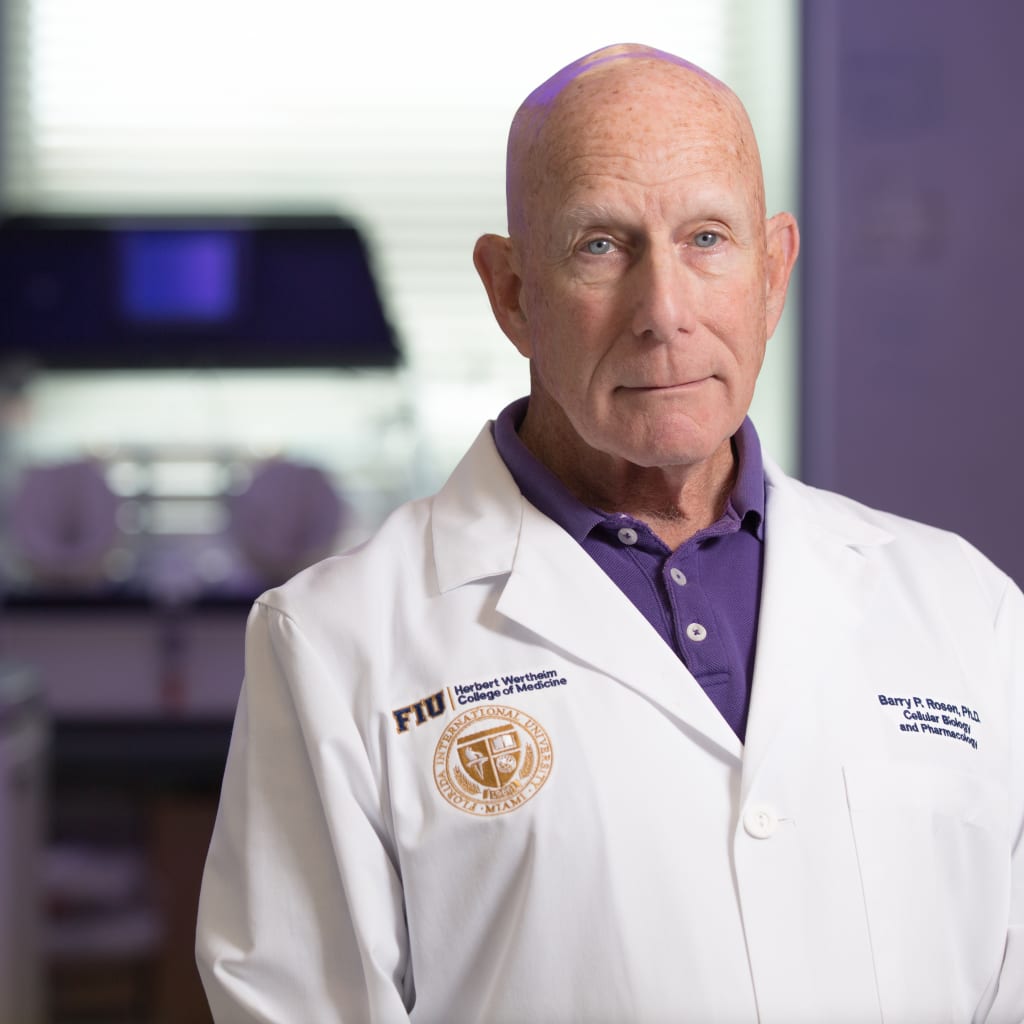Barry P. Rosen’s arsenic research funding exceeds $23M in nearly four decades
–By Ileana Varela for FIU News
FIU annually honors its top scholars—faculty members and administrators whose work demonstrates a significant impact in their respective fields. This year, the university has selected Distinguished University Professor Barry P. Rosen, as an FIU Top Scholar in the category of Established Faculty with Significant Grants. The honor acknowledges Rosen’s new Maximizing Investigators’ Research Award (MIRA) from the National Institute of General Medical Sciences, part of the National Institutes of Health (NIH).
Rosen, a prolific researcher who works in the Department of Cellular Biology & Pharmacology at the Herbert Wertheim College of Medicine (HWCOM), is an international expert on arsenic.
“Dr. Rosen is an outstanding educator. And a world-leading microbiologist and biochemist,” said Dr. Robert Sackstein, HWCOM dean and senior vice president for Health Affairs at FIU. “He is the epitome of a translational scientist in that he has made seminal basic science contributions to our understanding of arsenic toxicity, and has then harnessed this knowledge to advance clinical care by creating new arsenic-based therapies for drug-resistant microbial infections and cancer.”
The Rosen lab collaborates with national and international researchers to study the mechanisms of arsenic toxicity and detoxification. Arsenic, known as the King of Poisons, is the most toxic substance in the environment. It ranks first on the Environmental Protection Agency’s Superfund list of hazardous substances. Arsenic is often found in water and rice. Continual exposure to arsenic can cause cancer, diabetes, and childhood developmental delays.
The National Institutes of Health (NIH) has supported Rosen’s research on arsenic toxicity and detoxification for nearly four decades, with total funding of over $23M. He was awarded his first NIH R01 grant for this project in 1984. It was renewed as a 10-year MERIT (Method to Extend Research in Time) Award, and most recently as a MIRA until 2025 for $2.2M. This 5-year continuation will place Rosen’s funding for this project within the top 100 longest, continuously funded NIH research grants.
Rosen, who has been a faculty member at three medical schools over the last 50 years, remarks that he has been fortunate to have outstanding students and postdocs. “Some of our major findings were serendipitous, but most were the result of hard work, with incremental advances,” Rosen said. “Like a crossword puzzle, lots of small findings fit together to reveal overall patterns and insights into the workings of living organisms.”
Among his most notable findings: cloned and sequenced the first genes for arsenic resistance; identified the majority of genes for the biotransformation and transport of arsenic; characterized many of those genes at the protein and enzymatic level and solved the three-dimensional structure of many of those proteins; the discovery of a new broad-spectrum antibiotic that contains arsenic, identifying how arsenic gets into the seeds of plants such as rice, and the discovery of algae that chemically modify arsenic, reducing it to a less dangerous form.

